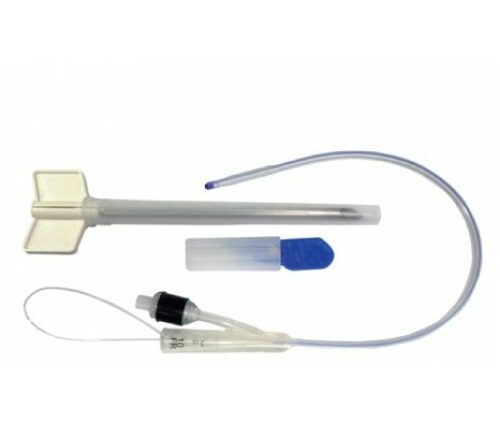Contents
Cystocath
When the bladder can no longer empty by natural means and the insertion of a urinary catheter is not possible, it is necessary to proceed with the installation of a cystocath. This catheter placed at the level of the pubis allows a direct flow of urine from the bladder to the outside.
What is a cystocath?
The cystocath (cysto for “bladder”, cath for “catheter”) also called suprapubic catheterization, consists in creating a urinary diversion by means of a catheter introduced into the bladder by transcutaneous route (through the skin), at the level pubis. Urine is collected in a bag that is changed regularly.
How is the installation of a cystocath?
The gesture is performed in a hospital environment, in consultation or in the emergency room, on the patient’s bed.
The pubic area is shaved and then disinfected. The doctor locates the bladder just above the pubic symphysis, injects a local anesthetic, then aspirates to check that it is in the bladder. Then he makes a small skin incision (5 mm), perforates the wall of the bladder using a trocar (a surgical instrument used to “pierce” a tissue), introduces a catheter, removes the trocar and connects the bladder bag. collection of urine at the catheter. The catheter is attached to the skin with a non-absorbable suture.
Why install a cystocath?
Sometimes the bladder can no longer empty properly through the urethral canal. This is called acute or chronic urinary retention.
The first therapeutic solution is to put a urinary catheter (or bladder catheter), that is to say a small pipe passed through natural channels to evacuate urine. But sometimes the urinary catheter is contraindicated. A cystocath is then necessary. This is the case, for example, in cases of urethral stenosis, trauma of the urethra, prostate adenoma, prostate cancer, prostatitis.
Cystocath is usually temporary, before surgery to restore normal urine output. In rare cases, the device is final.
After placing a cystocath
Suites
Bleeding may be present on the first urine. In case of irritation of the bladder, painkillers will be prescribed to relieve the patient.
The dressing is changed every day or every 2 days by a nurse. The collection bag is changed every 2 days with 500 ml day bags (attached by rubber bands to the leg) and 1,5 liter night bags. The catheter should be changed approximately every 6 weeks.
The patient can resume a normal life, but certain activities are limited due to the catheter (sport, swimming pool, etc.).
The risks
Certain incidents can occur during the installation of the cystocath:
- bleeding (increased risk in the event of a tumor);
- a perforation of the peritoneum on the cystocath was laid outside the bladder;
- a section of the catheter through the trocar;
- a leak around the catheter.
Others, at a distance from the pose:
- urinary tract infection;
- an abscess at the skin incision;
- a catheter blockage or a winding in the bladder.
Monitoring (quantity and appearance of urine, incised area, etc.), at the hospital or at home, enables these complications to be detected as early as possible.










